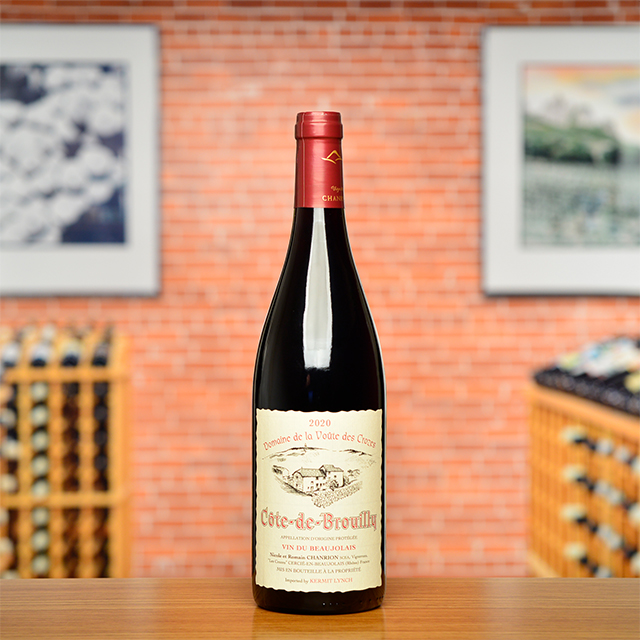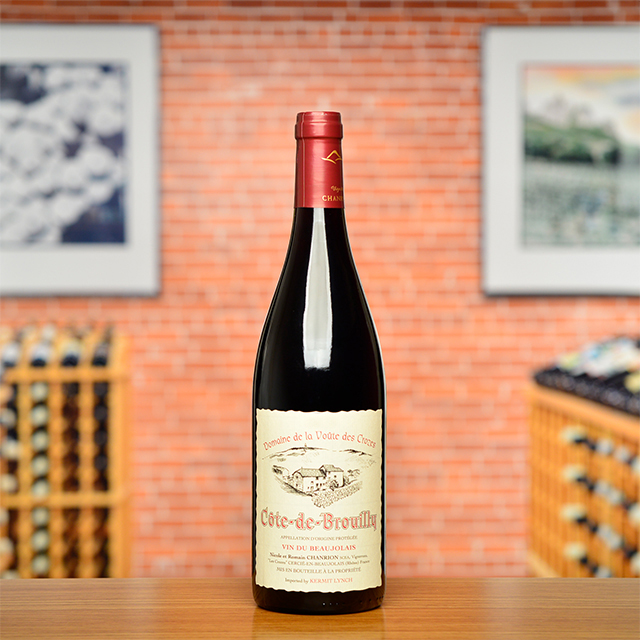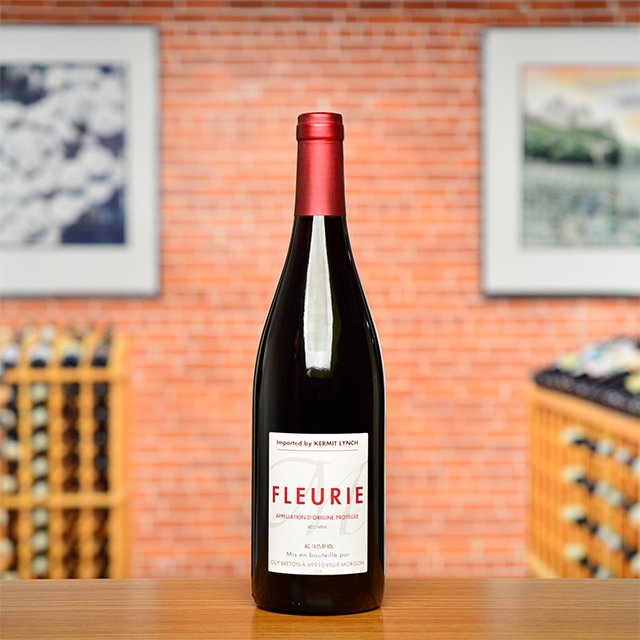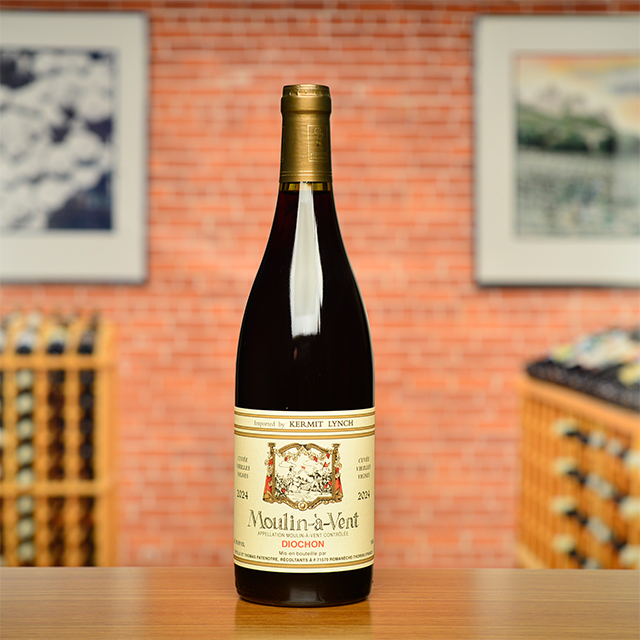Notify me
2020 Côte-de-Brouilly
Nicole Chanrion
Variations on granite, much like limestone in Burgundy, are the soil signature that combines with the Gamay grape to deliver the inimitable results of the Beaujolais. The Côte-de-Brouilly’s inactive volcano imparts a distinctive smoky, flinty quality to the wines grown here, adding backbone to their ripe fruitiness. Nicole Chanrion, who has worked the northern flank of the Côte for five decades, is now joined by her son, Romain, and together they continue this domaine’s worthy tradition of producing soulful, deep, structured reds from their family’s old vines. Their wines are among the longest-lived in the region.
—Dixon Brooke
| Wine Type: | red |
| Vintage: | 2020 |
| Bottle Size: | 750mL |
| Blend: | Gamay |
| Appellation: | Côte-de-Brouilly |
| Country: | France |
| Region: | Beaujolais |
| Producer: | Nicole Chanrion |
| Winemaker: | Nicole Chanrion |
| Vineyard: | 50 years, 3.5 ha |
| Soil: | Schist, Porphyry |
| Aging: | Ages for at least nine months before an unfiltered bottling |
| Farming: | Lutte Raisonnée |
| Alcohol: | 14.5% |
More from this Producer or Region

2024 Chiroubles “Cuvée Léa”
France | Beaujolais
Floral and succulent, bursting with notes of little red berries, but it is also delicate and light on its feet.

2024 Beaujolais MAGNUM
France | Beaujolais
This Beaujolais offers the drinkability of the most effusive Morgons with the frankness of a chiseled Moulin-à-Vent.

2024 Côte de Brouilly MAGNUM
France | Beaujolais
Château Thivin’s Côte de Brouilly seamlessly fuses pleasure, class, and intellect.

2022 Régnié
France | Beaujolais
Savor it while you can, because your glass will be empty before you know it, leaving you only with the spicy, mineral-laden aftertaste of a bottle that went down way too easily.

2024 Côte-de-Brouilly
France | Beaujolais
Loads of fun—juicy, round, structured, yet always elegant and focused. A classic favorite.

2021 Brouilly
France | Beaujolais
A generous dash of plump, sun-ripened fruit enveloping a granite core.

2024 Fleurie
France | Beaujolais
Guy Breton’s Fleurie is delicate, with buffed tannins and juicy fruit; it will leave your thirst slaked and your heart feeling light.

2024 Régnié “Grain & Granit”
France | Beaujolais
Here is a rich, bold Régnié, saturated with luscious fruit and earthy spice.

2022 Côte de Brouilly
France | Beaujolais
A relatively new addition to Guy Breton’s Beaujolais lineup, this exuberant Côte de Brouilly is flat-out delicious.

2024 Moulin-à-Vent “Vieilles Vignes”
France | Beaujolais
Moulin-à-Vent has a unique, earthy, chewy edge to it that you just can’t find anywhere else.
About The Producer
Nicole Chanrion
About The Region
Beaujolais

After years of the region’s reputation being co-opted by mass-produced Beaujolais Nouveau and the prevalence of industrial farming, the fortunes of vignerons from the Beaujolais have been on the rise in the past couple of decades. Much of this change is due to Jules Chauvet, a prominent Beaujolais producer who Kermit worked with in the 1980s and arguably the father of the natural wine movement, who advocated not using herbicides or pesticides in vineyards, not chaptalizing, fermenting with ambient yeasts, and vinifying without SO2. Chief among Chauvet’s followers was Marcel Lapierre and his three friends, Jean Foillard, Guy Breton, and Jean-Paul Thévenet—a group of Morgon producers who Kermit dubbed “the Gang of Four.” The espousal of Chauvet’s methods led to a dramatic change in quality of wines from Beaujolais and with that an increased interest and appreciation for the AOC crus, Villages, and regular Beaujolais bottlings.
The crus of Beaujolais are interpreted through the Gamay grape and each illuminate the variety of great terroirs available in the region. Distinguishing itself from the clay and limestone of Burgundy, Beaujolais soils are predominantly decomposed granite, with pockets of blue volcanic rock. The primary vinification method is carbonic maceration, where grapes are not crushed, but instead whole clusters are placed in a tank, thus allowing fermentation to take place inside each grape berry.
Much like the easy-going and friendly nature of many Beaujolais vignerons, the wines too have a lively and easy-drinking spirit. They are versatile at table but make particularly good matches with the local pork sausages and charcuterie. Though often considered a wine that must be drunk young, many of the top crus offer great aging potential.
More from Beaujolais or France
2022 Côte de Brouilly
Guy Breton France | Beaujolais
2024 Morgon “Vieilles Vignes”
Jean-Paul et Charly Thévenet France | Beaujolais
2024 Morgon
M. & C. Lapierre France | Beaujolais
2024 Côte de Brouilly MAGNUM
Château Thivin France | Beaujolais
2024 Moulin-à-Vent “Vieilles Vignes”
Bernard Diochon France | Beaujolais
2023 Fleurie
Jean Foillard France | Beaujolais
2024 Côte de Brouilly
Château Thivin France | Beaujolais
2021 Côte de Brouilly
Alex Foillard France | Beaujolais
2024 Chiroubles “Cuvée Léa”
Guy Breton France | Beaujolais
2023 Moulin-à-Vent “Sous la Roche”
Domaine Thillardon France | Beaujolais
2024 Beaujolais MAGNUM
Domaine Dupeuble France | Beaujolais
2023 Chénas “Vibrations”
Domaine Thillardon France | Beaujolais
2022 Côte de Brouilly
Guy Breton France | Beaujolais
2024 Morgon “Vieilles Vignes”
Jean-Paul et Charly Thévenet France | Beaujolais
2024 Morgon
M. & C. Lapierre France | Beaujolais
2024 Côte de Brouilly MAGNUM
Château Thivin France | Beaujolais
2024 Moulin-à-Vent “Vieilles Vignes”
Bernard Diochon France | Beaujolais
2023 Fleurie
Jean Foillard France | Beaujolais
2024 Côte de Brouilly
Château Thivin France | Beaujolais
2021 Côte de Brouilly
Alex Foillard France | Beaujolais
2024 Chiroubles “Cuvée Léa”
Guy Breton France | Beaujolais
2023 Moulin-à-Vent “Sous la Roche”
Domaine Thillardon France | Beaujolais
2024 Beaujolais MAGNUM
Domaine Dupeuble France | Beaujolais
2023 Chénas “Vibrations”
Domaine Thillardon France | Beaujolais
Kermit once said...

Kermit once said...
For the wines that I buy I insist that the winemaker leave them whole, intact. I go into the cellars now and select specific barrels or cuvées, and I request that they be bottled without stripping them with filters or other devices. This means that many of our wines will arrive with a smudge of sediment and will throw a more important deposit as time goes by, It also means the wine will taste better.



















